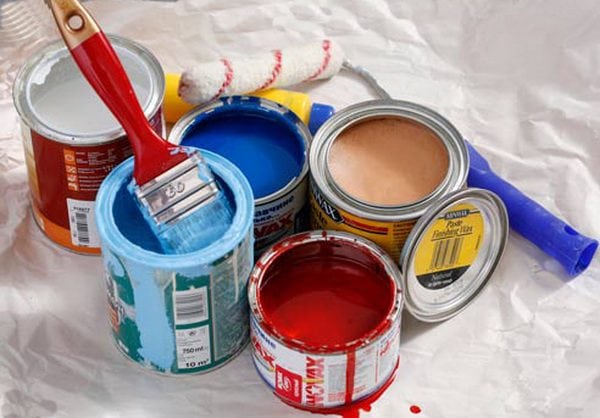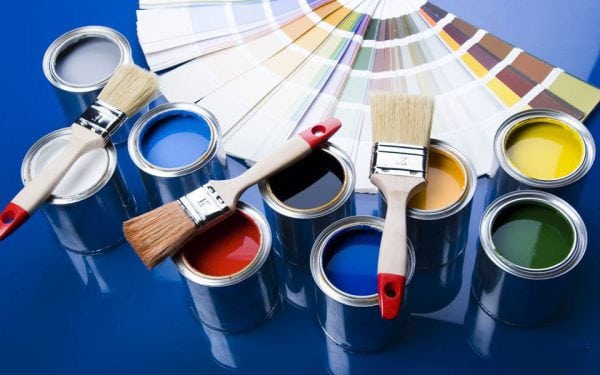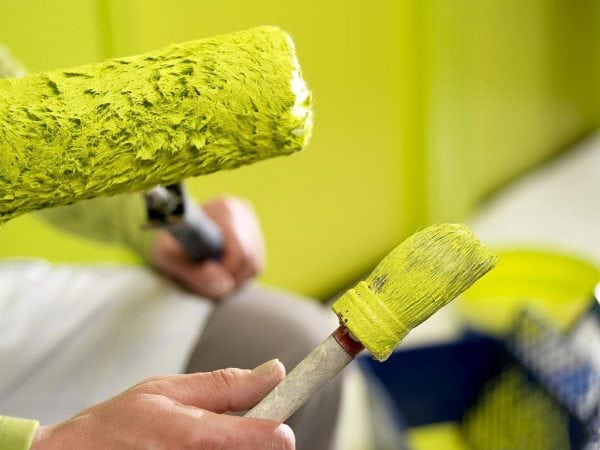Today, many masters of painting work pay great attention to such an indicator as the consumption of oil paint. Knowing these parameters, you can save money and not spend money on the purchase of excess paint. Also, the correct calculation of the required amount of funds will allow you not to run to the store during painting, buying the missing paintwork material.
- Standard flow rates
- How to determine the consumption of oil dye?
- Effect of coating color on consumption
- The influence of the paint tool
- Conclusion


Standard flow rates
Like all other paints and varnishes, oil paint has certain flow rates that you must know when painting. In addition, all factors that affect the consumption of paint material should be considered. These include:
- viscosity;
- type of surface to be treated;
- selection of paint tools;
- environmental conditions.
For example, woodwork requires less dye than metalwork. This is due to the fact that the metal surface is smoother than wood. Accordingly, more dye drains from the metal.
Also, do not forget about environmental conditions. So, painting in a room will require a little more money than painting the same area on the street in dry and warm weather.
As a rule, the average consumption of oil paint per 1 m2 is in the range from 110 to 130 mg. These standards apply to applying one coat. At the same time, in order to achieve a good result and to qualitatively paint the surface, it is advisable to apply at least two layers.

How to determine the consumption of oil dye?
Today, there are two main ways in which you can specify the flow rate for an oil coloring agent. The easiest option is to read the average consumption per 1 m2, which is usually indicated on the can with paintwork.
If you could find this information, then it is enough to calculate the surface area to be painted and multiply this indicator by the average material consumption. So you get the necessary amount of paint and varnish, which is needed to paint the entire surface.
to contents ↑Effect of coating color on consumption
It is important to know that the color of the oil paint composition affects the flow rate. This is due to the fact that each type of color has a certain evaporation rate. In this regard, manufacturers immediately take this into account for the convenience of users.
Approximate consumption rates of one liter of oil paint depending on the color are as follows:
- blue color stains 12-16 m2 of the surface;
- black material covers 17-20 m2;
- 11-14 m2 of coating is painted with green paint;
- the product in brown tones stains 13-16 m2 of the surface;
- white paint covers only 7-10 m2;
- yellow dye stains 5-10 m2 of coating.

The influence of the paint tool
The total consumption depends on the selected painting tool with which you are going to carry out finishing work. Therefore, before you start painting, you should pay great attention to the choice of the tool with which you are going to apply the paint.
Most of the product is lost when using a brush. This is due to the fact that the villi are impregnated with paint, some of which remains on the brush. In addition, such a tool has a not very convenient design, therefore, a certain amount of dye will drip onto the floor. In this regard, if you want to save paint and varnish material, then it is better not to use a brush.
Much less paint will be consumed when using a silicone-based roller. Such a tool practically does not absorb the product, which significantly reduces its consumption. In addition, the use of a special tray will help make painting more economical.
The lowest level of oil paint consumption is observed when using a spray gun. This tool will not allow any loss of dye, directing its entire flow to the surface to be painted. The only minor losses in this case will be associated with the release of paint particles into the air.
In addition, the amount of paint used depends on the type of surface to be painted: paint consumption for metal will be smaller than wood, as the wood absorbs part of the composition.
To reduce the amount of paint and varnish used, proper preparation of the substrate before painting will help. Therefore, before applying oil paint, the surface should be cleaned of the remnants of old coloring materials (mechanically or using chemical washes) and treated with soil.
to contents ↑Conclusion
Thus, many factors influence the consumption of oil paints and varnishes, among which the most important role is played by color, the choice of tools and the type of surface to be painted.




